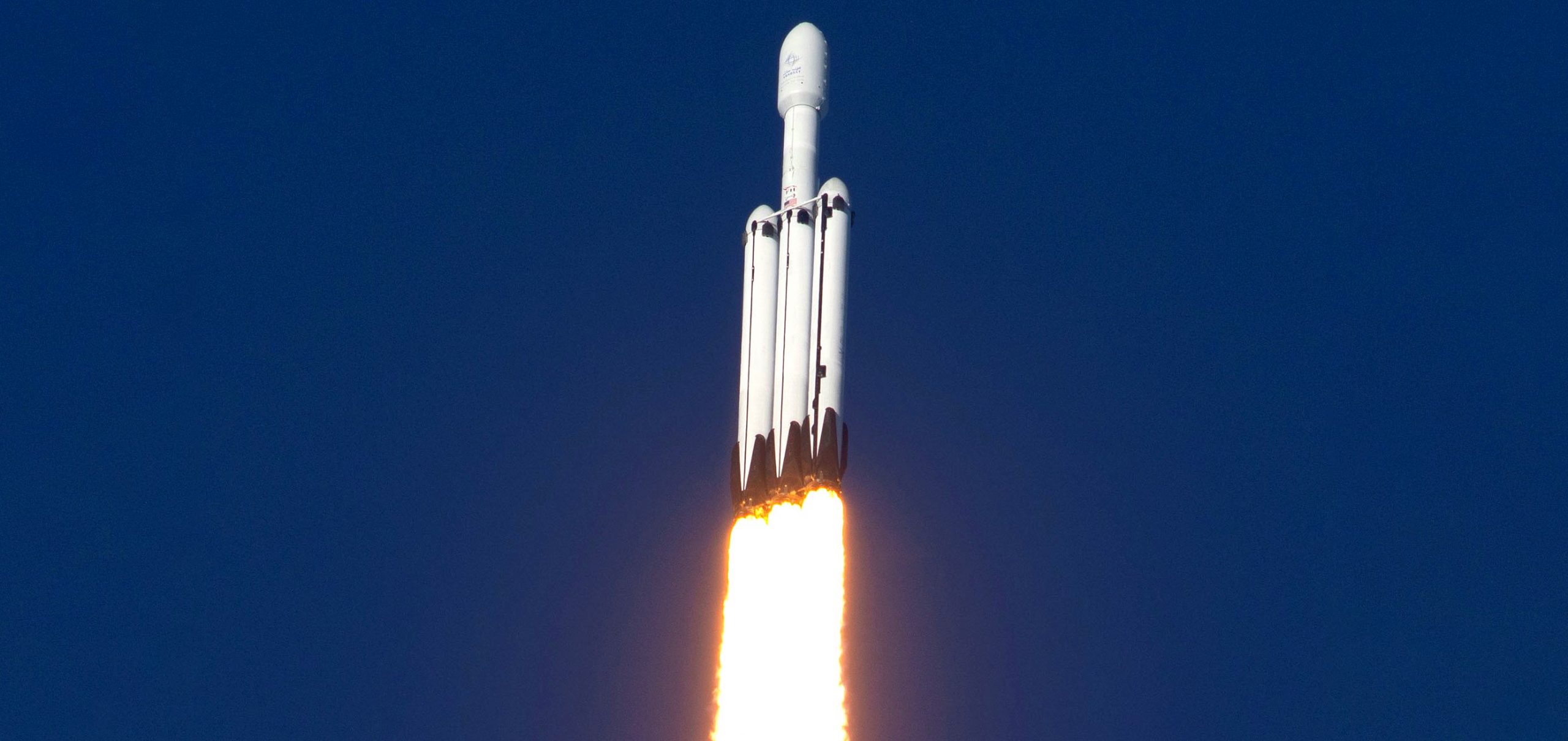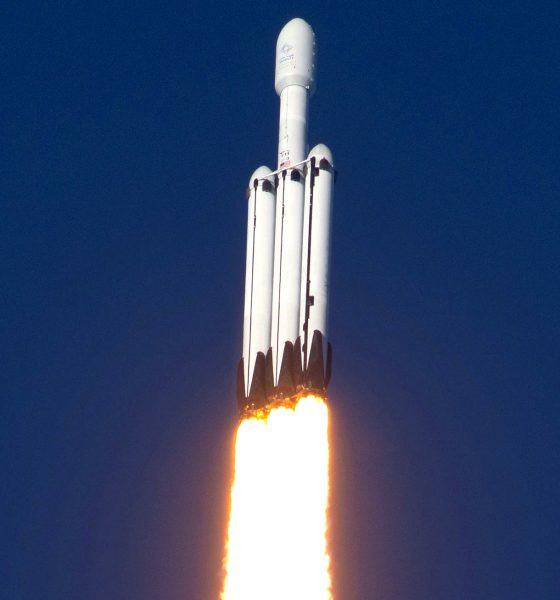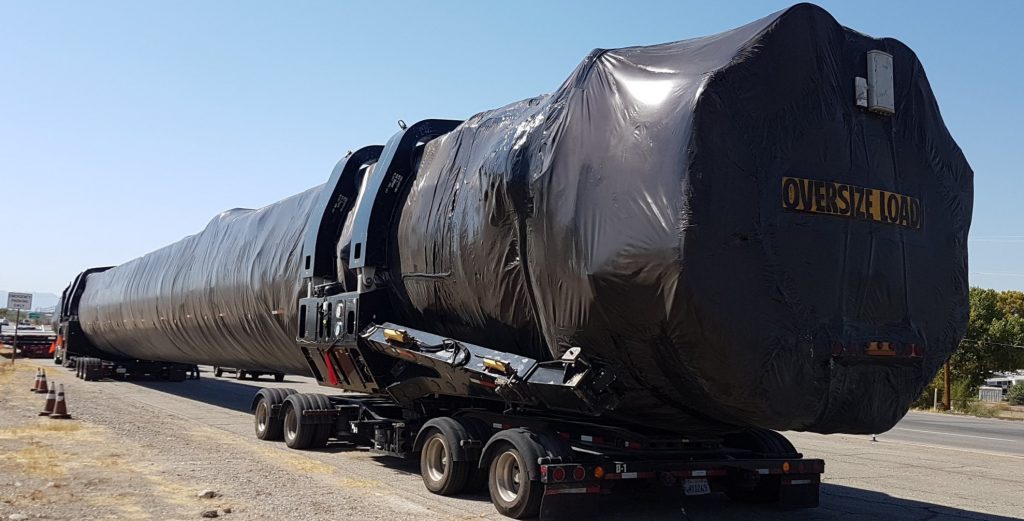

News
SpaceX’s next Falcon Heavy launch slips into 2021
SpaceX’s next Falcon Heavy launch – set to be the rocket’s fourth overall – has slipped several months into 2021 according to the vice commander of the US Air Force Space and Missile Systems Center (USAF SMC).
Known as AFSPC-44 (now USSF-44), the nature of Falcon Heavy’s next payload remains a mystery. Headed to geostationary orbit, the satellite will likely be involved in military satellite communications, possibly including espionage (also known as signals intelligence or SIGINT). Technically, the USSF-44 mission includes two separate satellites and at least two additional rideshare payloads and will weigh roughly 3.7 metric tons (~8200 lb) at launch.
When the contract was announced, Falcon Heavy was expected to launch USSF-44 no earlier than (NET) Q4 2020. By April 2020, that target was closer to late November or December. Now, four months after that report, Brigadier General Jason Cothern says that SpaceX’s next Falcon Heavy launch is scheduled NET February 28th, 2021.
The delay doesn’t come as much of a surprise. Based on public observation of SpaceX’s Falcon booster production and testing, requiring thousands of miles of extremely conspicuous highway transport, it was already clear that the mission was unlikely to launch this year. Of the six first stages spotted in transport over the last nine months, all were clearly Falcon 9 boosters and lacked any of the telltale parts that distinguish Falcon Heavy side and center boosters.

The most recent ‘core spottings’ – a new Falcon 9 booster headed West after acceptance testing and another preparing for acceptance testing in Texas late last month – all but confirmed that USSF-44 was significantly delayed. Since mid-2019, SpaceX has intentionally slowed down Falcon booster production to focus on the higher-volume production of expendable hardware (fairings and second stages). While the company could technically complete boosters every two weeks if its feet were put to the coals and has generally averaged 10 per year, that figure has dropped closer to 6-8 boosters per year over the last ~18 months.
Coupled with a report that all three of the USSF-44 Falcon Heavy rocket’s boosters would be brand new, the lack of sightings in the wild implied that has yet to ship even one of those complex rockets to McGregor, Texas for acceptance testing. Based on preparations for Falcon Heavy’s April 2019 Block 5 launch debut, the process of testing three new Falcon boosters singlehandedly takes at least three months. Additionally, all three of the Arabsat 6A mission’s new Falcon Heavy boosters arrived in Florida a full two months before launch.

In other words, given that a brand new Falcon 9 booster rolled out of SpaceX’s Hawthorne, CA factory on August 24th and that said factory isn’t really set up for concurrent booster completion, it would take unprecedented feats of manufacturing and testing for Falcon Heavy Flight 4 to be ready to launch less than four months from now (around the turn of the New Year).
In fact, even under the assumption that the next three boosters on SpaceX’s factory assembly line are all for Falcon Heavy Flight 4, the new February 2021 launch date is going to be a tight deadline. There is no evidence that SpaceX production delays are to blame for the USSF-44 launch delay and the coronavirus-related disruption of satellite production is equally – if not more – likely. Either way, SpaceX’s fourth Falcon Heavy launch will have to wait a few extra months. Barring a surprise mission over the next six months, Falcon Heavy Flight 4 will also be SpaceX’s first operational launch directly to geostationary orbit (GEO).
Check out Teslarati’s Marketplace! We offer Tesla accessories, including for the Tesla Cybertruck and Tesla Model 3.

News
Tesla aims to combat common Full Self-Driving problem with new patent
Tesla writes in the patent that its autonomous and semi-autonomous vehicles are heavily reliant on camera systems to navigate and interact with their environment.

Tesla is aiming to combat a common Full Self-Driving problem with a new patent.
One issue with Tesla’s vision-based approach is that sunlight glare can become a troublesome element of everyday travel. Full Self-Driving is certainly an amazing technology, but there are still things Tesla is aiming to figure out with its development.
Unfortunately, it is extremely difficult to get around this issue, and even humans need ways to combat it when they’re driving, as we commonly use sunglasses or sun visors to give us better visibility.
Cameras obviously do not have these ways to fight sunglare, but a new patent Tesla recently had published aims to fight this through a “glare shield.”
Tesla writes in the patent that its autonomous and semi-autonomous vehicles are heavily reliant on camera systems to navigate and interact with their environment.

The ability to see surroundings is crucial for accurate performance, and glare is one element of interference that has yet to be confronted.
Tesla described the patent, which will utilize “a textured surface composed of an array of micro-cones, or cone-shaped formations, which serve to scatter incident light in various directions, thereby reducing glare and improving camera vision.”

The patent was first spotted by Not a Tesla App.
The design of the micro-cones is the first element of the puzzle to fight the excess glare. The patent says they are “optimized in size, angle, and orientation to minimize Total Hemispherical Reflectance (THR) and reflection penalty, enhancing the camera’s ability to accurately interpret visual data.”
Additionally, there is an electromechanical system for dynamic orientation adjustment, which will allow the micro-cones to move based on the angle of external light sources.
This is not the only thing Tesla is mulling to resolve issues with sunlight glare, as it has also worked on two other ways to combat the problem. One thing the company has discussed is a direct photon count.
CEO Elon Musk said during the Q2 Earnings Call:
“We use an approach which is direct photon count. When you see a processed image, so the image that goes from the sort of photon counter — the silicon photon counter — that then goes through a digital signal processor or image signal processor, that’s normally what happens. And then the image that you see looks all washed out, because if you point the camera at the sun, the post-processing of the photon counting washes things out.”
Future Hardware iterations, like Hardware 5 and Hardware 6, could also integrate better solutions for the sunglare issue, such as neutral density filters or heated lenses, aiming to solve glare more effectively.
Elon Musk
Delaware Supreme Court reinstates Elon Musk’s 2018 Tesla CEO pay package
The unanimous decision criticized the prior total rescission as “improper and inequitable,” arguing that it left Musk uncompensated for six years of transformative leadership at Tesla.

The Delaware Supreme Court has overturned a lower court ruling, reinstating Elon Musk’s 2018 compensation package originally valued at $56 billion but now worth approximately $139 billion due to Tesla’s soaring stock price.
The unanimous decision criticized the prior total rescission as “improper and inequitable,” arguing that it left Musk uncompensated for six years of transformative leadership at Tesla. Musk quickly celebrated the outcome on X, stating that he felt “vindicated.” He also shared his gratitude to TSLA shareholders.
Delaware Supreme Court makes a decision
In a 49-page ruling Friday, the Delaware Supreme Court reversed Chancellor Kathaleen McCormick’s 2024 decision that voided the 2018 package over alleged board conflicts and inadequate shareholder disclosures. The high court acknowledged varying views on liability but agreed rescission was excessive, stating it “leaves Musk uncompensated for his time and efforts over a period of six years.”
The 2018 plan granted Musk options on about 304 million shares upon hitting aggressive milestones, all of which were achieved ahead of time. Shareholders overwhelmingly approved it initially in 2018 and ratified it once again in 2024 after the Delaware lower court struck it down. The case against Musk’s 2018 pay package was filed by plaintiff Richard Tornetta, who held just nine shares when the compensation plan was approved.
A hard-fought victory
As noted in a Reuters report, Tesla’s win avoids a potential $26 billion earnings hit from replacing the award at current prices. Tesla, now Texas-incorporated, had hedged with interim plans, including a November 2025 shareholder-approved package potentially worth $878 billion tied to Robotaxi and Optimus goals and other extremely aggressive operational milestones.
The saga surrounding Elon Musk’s 2018 pay package ultimately damaged Delaware’s corporate appeal, prompting a number of high-profile firms, such as Dropbox, Roblox, Trade Desk, and Coinbase, to follow Tesla’s exodus out of the state. What added more fuel to the issue was the fact that Tornetta’s legal team, following the lower court’s 2024 decision, demanded a fee request of more than $5.1 billion worth of TSLA stock, which was equal to an hourly rate of over $200,000.
Delaware Supreme Court Elon Musk 2018 Pay Package by Simon Alvarez
News
Tesla Cybercab tests are going on overdrive with production-ready units
Tesla is ramping its real-world tests of the Cybercab, with multiple sightings of the vehicle being reported across social media this week.

Tesla is ramping its real-world tests of the Cybercab, with multiple sightings of the autonomous two-seater being reported across social media this week. Based on videos of the vehicle that have been shared online, it appears that Cybercab tests are underway across multiple states.
Recent Cybercab sightings
Reports of Cybercab tests have ramped this week, with a vehicle that looked like a production-ready prototype being spotted at Apple’s Visitor Center in California. The vehicle in this sighting was interesting as it was equipped with a steering wheel. The vehicle also featured some changes to the design of its brake lights.
The Cybercab was also filmed testing at the Fremont factory’s test track, which also seemed to involve a vehicle that looked production-ready. This also seemed to be the case for a Cybercab that was spotted in Austin, Texas, which happened to be undergoing real-world tests. Overall, these sightings suggest that Cybercab testing is fully underway, and the vehicle is really moving towards production.
Production design all but finalized?
Recently, a near-production-ready Cybercab was showcased at Tesla’s Santana Row showroom in San Jose. The vehicle was equipped with frameless windows, dual windshield wipers, powered butterfly door struts, an extended front splitter, an updated lightbar, new wheel covers, and a license plate bracket. Interior updates include redesigned dash/door panels, refined seats with center cupholders, updated carpet, and what appeared to be improved legroom.
There seems to be a pretty good chance that the Cybercab’s design has been all but finalized, at least considering Elon Musk’s comments at the 2025 Annual Shareholder Meeting. During the event, Musk confirmed that the vehicle will enter production around April 2026, and its production targets will be quite ambitious.








